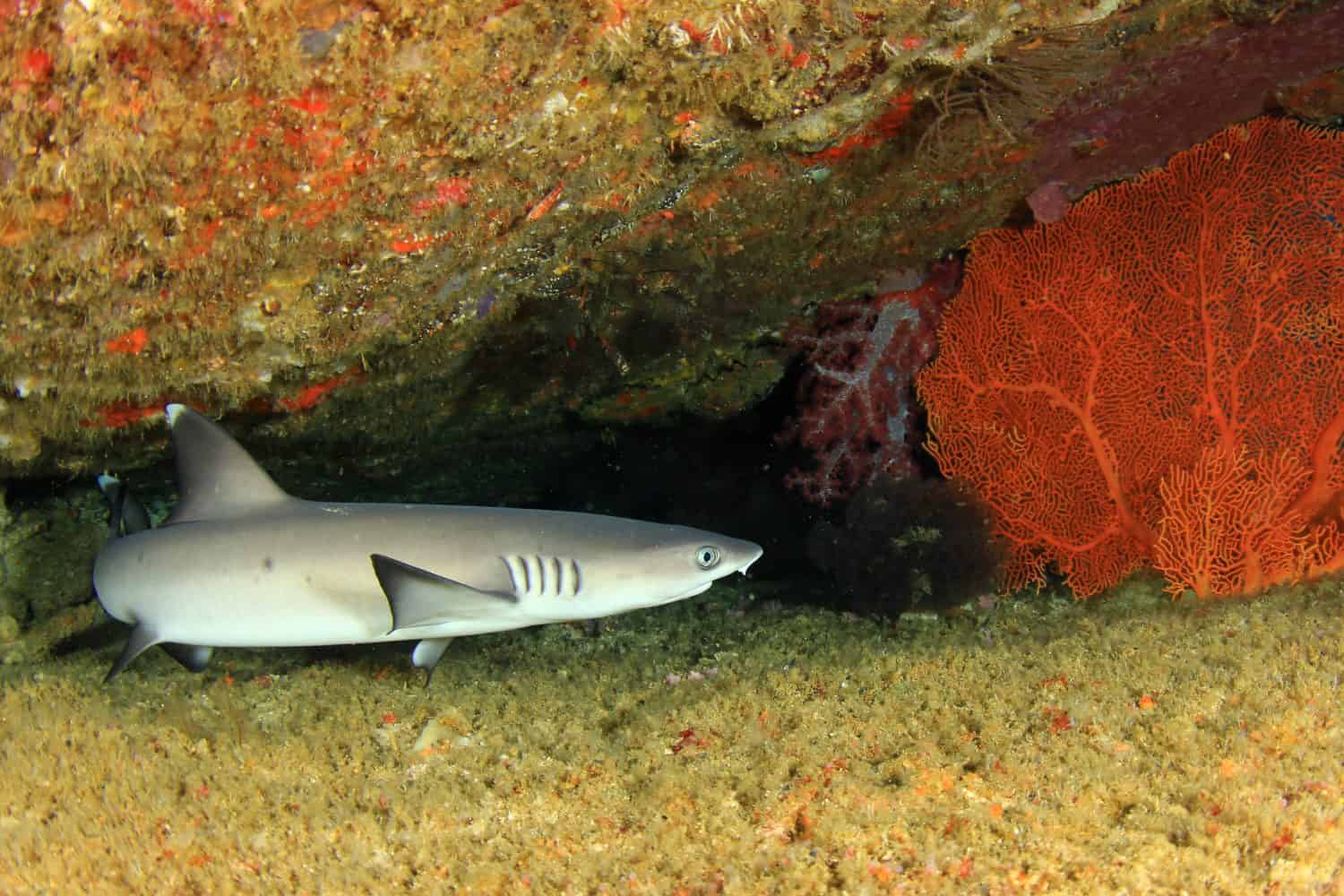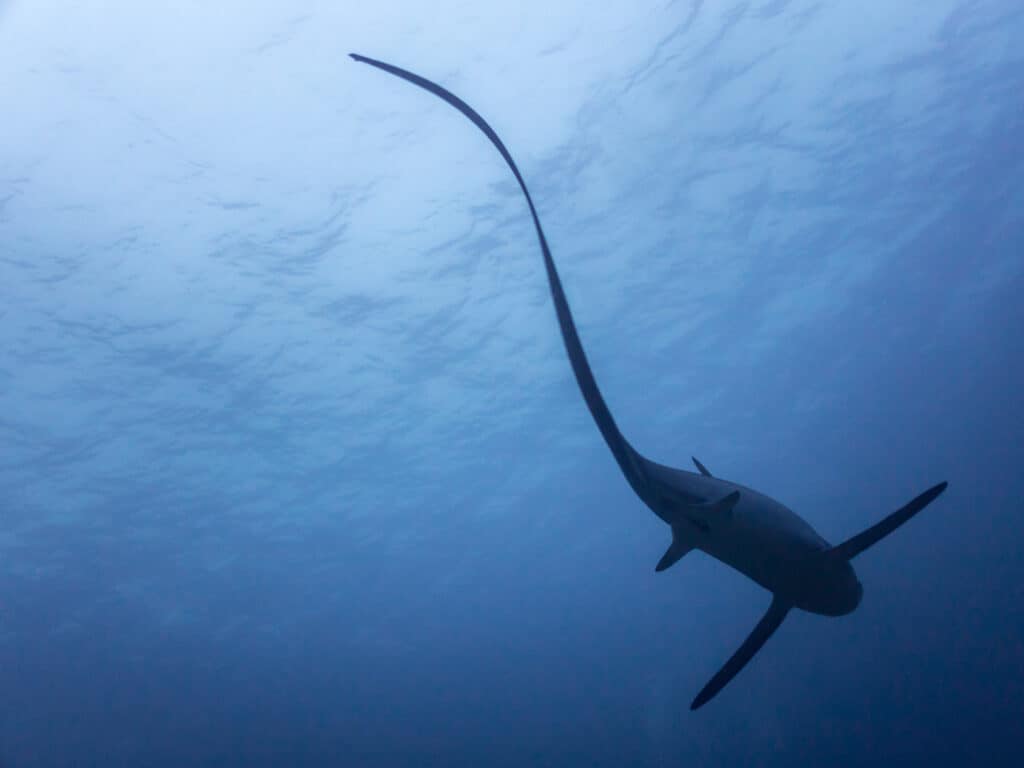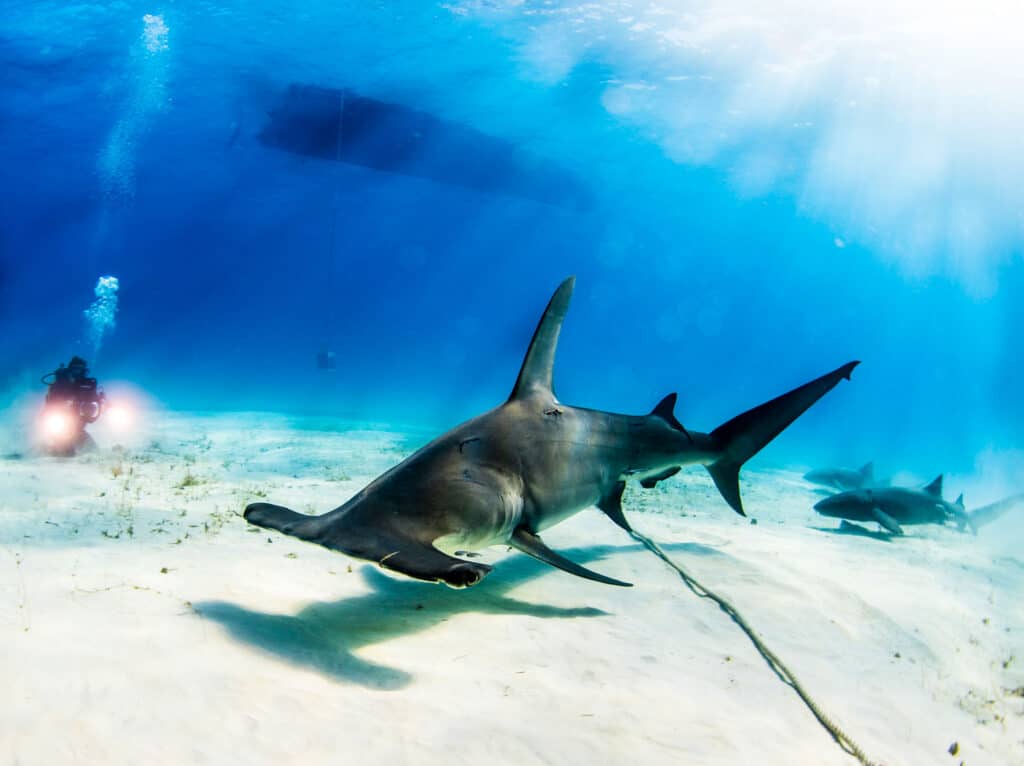Living fossils and apex predators, many species of sharks feature body plans and hunting strategies practically unchanged for hundreds of millions of years. Their ability to detect the electrical fields of their prey, an acute sense of smell, and a multitude of hunting strategies make them formidable predators. So, how do sharks hunt? Below, we’ll discuss four impressive strategies that various sharks use to capture their prey.
Read on to learn more!
1. How Do Sharks Hunt: Ambushing
Many categories of sharks use ambush tactics to hunt their prey. Below, we’ll talk about sharks’ various ambush tactics based on what part of the ocean they occupy.
Benthic Species
Benthic marine animals spend their lives along the bottom of the ocean, from shallow, coastal waters to deep-sea environments. Examples of bottom-dwelling sharks include angel sharks (Squatina spp.), wobbegongs (Orectolobidae), and nurse sharks (Ginglymostoma cirratum). Below, we’ll cover the impressive strategies these bottom-dwelling predators use to capture their meals.
Some species of benthic sharks, such as the ray-shaped angel sharks, bury themselves in sandy and muddy areas where they can launch ambush attacks. They tend to bury themselves near and in reefs and kelp forests where prey is abundant. Some of these benthic sharks will remain in the same position for about ten days, launching out of their hidden spot to snatch fish or crustaceans moving too closely by.
For example, the Pacific angel shark (Squatina californica) can go days without eating by conserving energy and only moving to grab prey. Like most benthic species, the Pacific angel shark has specialized muscles that pump water over their gills and through holes in their head (spiracles). This prevents them from having to move to breathe continuously.

The bottom-dwelling angel sharks primarily hunt using ambush tactics of hiding beneath sediment and then snatching unwitting prey.
©LuisMiguelEstevez/Shutterstock.com
Pelagic Species
Pelagic sharks are open-ocean marine animals. They inhabit tropical to temperate waters, and many are highly migratory. They commonly live and hunt in waters up to 6,600 feet deep.
A famous example of a pelagic shark is the great white (Carcharodon carcharias). While the great white can’t bury itself in the bottom of the ocean, it uses a different form of camouflage to launch ambush attacks on its highly mobile prey. Great whites feature countershading, in which their underside is white, and their upper surfaces are blue-grey. This shading aids the shark in concealment against its open-ocean environment. White sharks typically attack their prey from below, swimming towards the surface quickly and often launching out of the water. Through this ambush tactic, they catch the animal by surprise and deliver a sudden and typically fatal bite.

The
great white shark
is a pelagic species that uses ambush tactics and bursts of speed to launch prey out of the water.
©Sergey Uryadnikov/Shutterstock.com
2. How Do Sharks Hunt: Chase and Trap
Sharks that live and hunt primarily in reef ecosystems are experts in the chase-and-trap strategy for capturing prey. Some species, such as the whitetip reef shark (Triaenodon obesus), sometimes drive their prey into crevices. Once the prey is cornered, they can jam their slim snouts into the crevice and capture their meal. These reef sharks are well-suited for maneuvering in tight spaces, allowing them to access prey trapped or hiding in crevices that most other reef shark species couldn’t capture. Whitetip reef sharks can also breathe without moving, allowing them to remain stationary as they root around in tight spaces of the reef.
Scientists have observed that the larger, less maneuverable grey reef sharks (Carcharhinus amblyrhynchos) will hunt near the whitetips as they attempt to snatch any prey that whitetips may drive out of crevices.

The slender, maneuverable whitetip reef shark often chases and traps prey in crevices of the reef.
©Rich Carey/Shutterstock.com
3. Herd and Stun
The thresher shark (Alopias spp.) features a highly elongated tail (caudal fin) that can deliver devastating blows to stun its prey. Their distinctive tail can measure up to 9 feet long. They will often hunt in small groups or pairs, herding schooling fish into tight, small circles before using their tails to stun their prey. They can whip their tails horizontally and vertically at up to 50 miles per hour. The force of these blows can stun nearby fish that aren’t even physically hit by the tail.

The incredible, whip-like tail of the thresher shark can stun prey.
©HikeAndShoot/Shutterstock.com
4. Pinning
The body plan of the hammerhead shark (Sphyrnidae) is perfectly adapted to hunting its favorite prey- stingrays. This unique shark’s eye placement allows it to quickly scan a large area, while its wide head will enable it to pin stingrays to the seafloor. Hammerheads can also use their distinctly shaped head to unbury prey hidden along the bottom of the sea. Electroreceptors between the shark’s eyes increase its ability to detect prey quickly.

Hammerhead sharks
can use their uniquely shaped heads to pin stingrays to the seafloor.
©iStock.com/Howard Chen
The photo featured at the top of this post is © Martin Voeller/Shutterstock.com
Thank you for reading! Have some feedback for us? Contact the AZ Animals editorial team.






